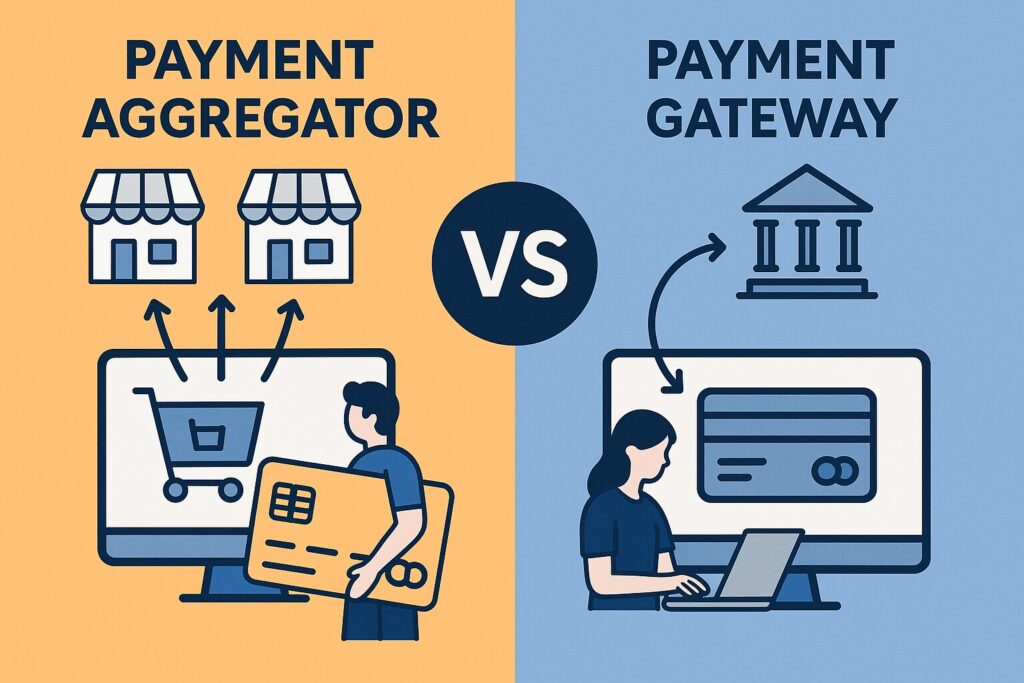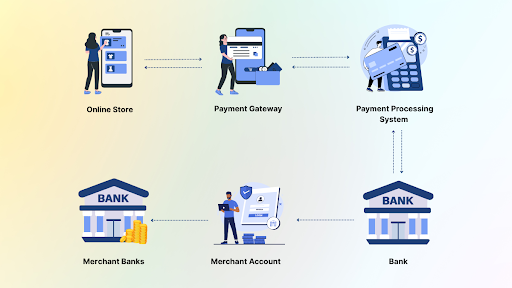Introduction
If you’ve ever made an online payment, booked a flight, paid a utility bill, or shopped on an e-commerce site, you’ve likely used a payment aggregator without realizing it.
But what is a payment aggregator in simple terms, and why is it so important in today’s digital economy? Let’s break it down.
What is a Payment Aggregator?
A payment aggregator (PA) is a regulated fintech service that enables businesses (merchants) to accept digital payments without opening separate accounts or contracts with every bank or card network. The aggregator acts as a middle layer between customers, banks, and merchants, making payments faster, safer, and easier.
How Does a Payment Aggregator Work?
- Customer pays online: A buyer chooses UPI, card, net banking, or wallet at checkout.
- Aggregator processes securely: The payment aggregator captures and routes details to the relevant bank or network, applying risk checks.
- Funds settle to the merchant: After approval, money is settled into the merchant’s account, often the same day or within agreed-upon timelines.
Instead of integrating with multiple banks and payment methods, a merchant integrates once with the payment aggregator and unlocks all major modes.
Why Do Businesses Use a Payment Aggregator?
- Easy onboarding: One integration and fewer bank contracts.
- More ways to pay: UPI, cards, net banking, wallets, EMI/BNPL, and more.
- Faster settlements: Quicker access to funds with clear payout cycles.
- Fraud & risk controls: Built-in security, tokenization, and monitoring.
- Scales with growth: Handles spikes, new payment rails, and multi-channel expansion.
Payment Aggregator vs Payment Gateway

- Payment Gateway: The secure technology that transmits payment data between the customer, merchant, and bank.
- Payment Aggregator: The service provider that onboards merchants, collects payments on their behalf, and settles funds to them (often bundling a gateway within its offering).
Think of the gateway as the bridge for data, while the aggregator is the bridge plus the toll operator handling money flow and merchant settlement.
Curious about the engine behind smooth online payments? Check out our Payment Gateway and see how it keeps transactions flowing
Why It Matters to Consumers
- Choice: Pay via UPI, cards, wallets, EMI, or net banking.
- Speed: Faster, smoother checkout experiences.
- Security: Industry-grade encryption and authentication.
- Reliability: Payments reach merchants with a clear transaction status.
Conclusion
What is a payment aggregator? It’s the backbone of modern digital commerce, simplifying how businesses accept money and how customers choose to pay. As digital payments continue to grow, payment aggregators deliver the convenience, trust, and speed that keep transactions moving.
FAQs: What is Payment Aggregator
What is a payment aggregator in simple words?
A payment aggregator is a regulated service that lets businesses accept digital payments (UPI, cards, net banking, wallets) through one integration and one contract.
How does a payment aggregator work during checkout?
It securely routes customer payment data to banks/networks, runs risk checks, and settles the approved amount into the merchant’s account on a defined cycle.
Payment aggregator vs payment gateway: what’s the difference?
A gateway moves payment data securely. An aggregator also onboards merchants, holds/collects funds on their behalf, and settles the money to them.
Is a payment aggregator regulated in India?
Yes. Payment aggregators operate under RBI authorization and follow security, KYC, merchant onboarding, and settlement guidelines.
What documents are needed to onboard with a payment aggregator?
Typically, PAN, GST (if applicable), business proof, address proof, bank details, and authorized signatory KYC. Exact requirements vary by provider and business type.
What are the fees or MDR charged by payment aggregators?
Charges depend on method (UPI, cards, net banking), volumes, and risk. Providers may offer tiered MDR, platform fees, or negotiated enterprise pricing.
How fast are settlements from a payment aggregator?
Settlement cycles range from same-day to T+1/T+2 working days depending on product, bank cut-offs, and merchant risk profile.
Are refunds and chargebacks handled by payment aggregators?
Yes. Aggregators provide refund APIs and workflows. Card chargebacks follow network rules; the aggregator facilitates evidence submission and status tracking.
Is it safe to use a payment aggregator?
Reputable aggregators use PCI-DSS controls, encryption, tokenization, velocity checks, and fraud monitoring. Always choose RBI-authorized providers.
Does a payment aggregator support UPI, EMI, and BNPL?
Most leading aggregators support UPI, cards, EMI/BNPL, net banking, and wallets, with routing and risk tools to maximize success rates.
Can international cards be accepted through a payment aggregator?
Often yes, if cross-border acceptance is enabled and compliance/KYC is cleared. Pricing, risk checks, and settlement timelines may differ.
Who should use a payment aggregator: SMBs or enterprises?
Both. SMBs get quick go-live with multi-method acceptance; enterprises gain scale, uptime SLAs, smart routing, reconciliation, and advanced reporting.




